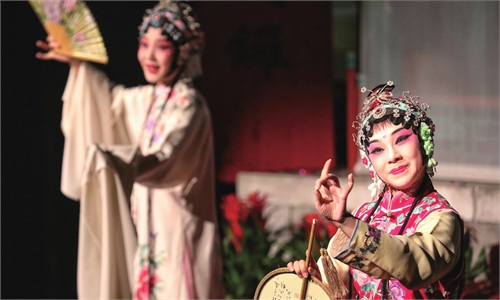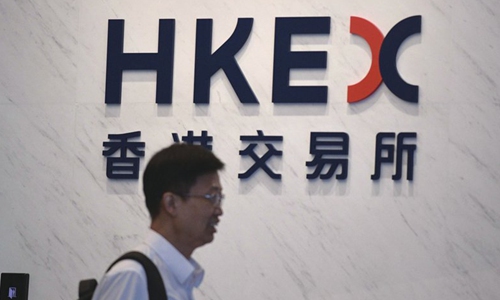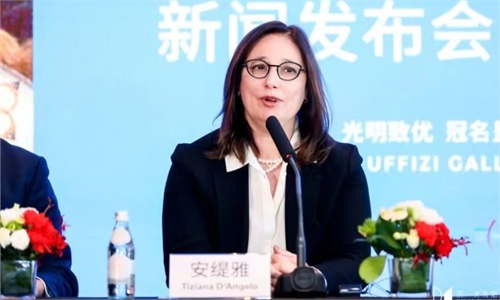ARTS / CULTURE & LEISURE
China-Italy exhibition reveals shared connection between ancient cultures
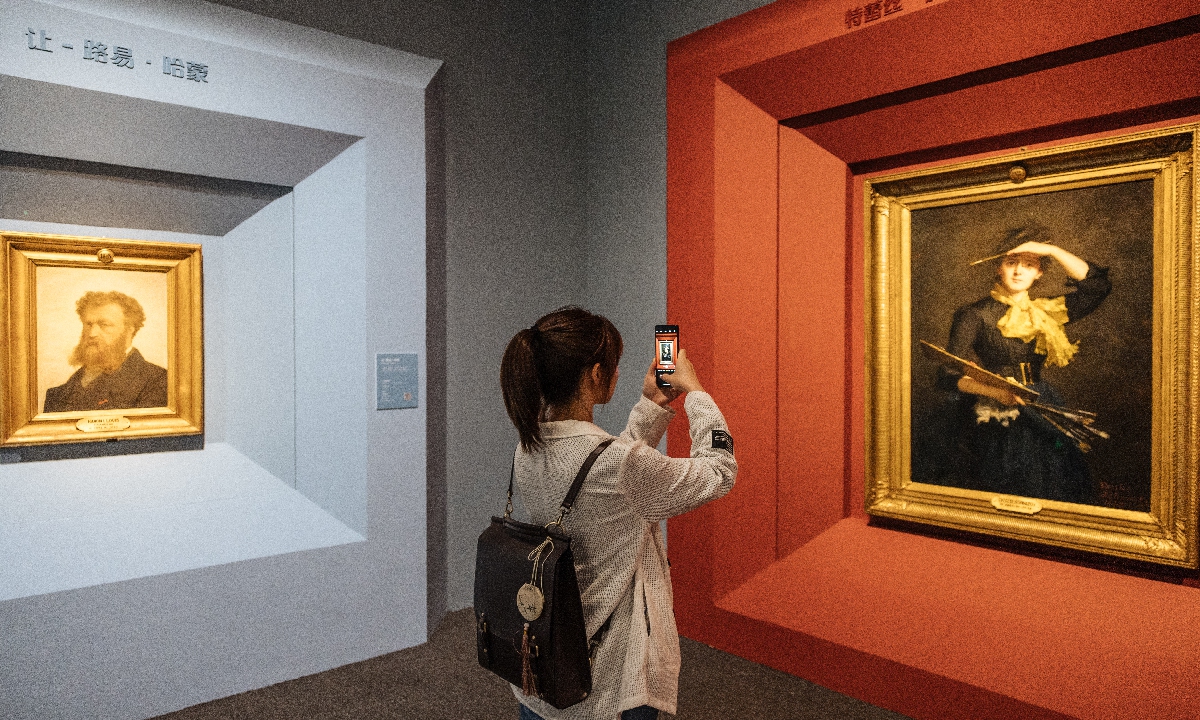
A visitor explores the exhibition at the National Museum of China in Beijing. Photo: Li Hao/Global Times
Inlaid in a velvety maroon wall at the National Museum of China (NMC), Self-Portrait, one of the Italian Renaissance master Raffaello Sanzio's most eminent works, becomes the star of the latest China-Italy art exhibition co-lunched by the museum in Beijing and the Uffizi Galleries, a treasure house of Renaissance classics based in Florence, Italy.
The work created by the Italian artist better known as Raphael more than 500 years ago is only one of 50 self-portrait paintings at the show that Vanessa Gavioli, one of the exhibition's curators, described to the Global Times as a "temple of artists" that takes Chinese visitors to look closer at works representing the spirit of Italian culture.
'A fulcrum'
Decoding Self-Portrait for the Global Times, Alessandra Griffo, the exhibition's other curator, said that behind the "majestic" look of the painting, the "real" Raphael was a "sweet young man" with a slight melancholy look in his eyes.
Raphael gained the title of "Renaissance pioneer" while he was still staggeringly young. Passing at the age of 37, he left behind this legacy that became an important part of Western art until the second half of the 19th century.
"It shows Italy was a fulcrum to the development of the whole European Renaissance," she remarked.
Besides Raphael, the show is also crowded with works from other big names such as Flemish Renaissance-Baroque painter Peter Paul Rubens, the Dutch "master of light" Rembrandt, Russian-French dreamy modernist Chagall and Chinese contemporary artists such as Cai Guoqiang.
Unlike many other cross-cultural shows in China that present works done in various mediums and styles, the current Beijing exhibition focuses on self-portraits. For this reason, how to curate the exhibition was "not an easy job," Gavioli said.
The 50 paintings were selected from the Italian art house's nearly 2,000 artworks. The way these iconic works are threaded together reveals an art landscape that has evolved from the 16th to the 21st century.
Gavioli told the Global Times that the new exhibition is more spiritual in nature compared to the Uffizi's previous collaboration with Shanghai's Bund One Art Museum.
"At the Shanghai show, we placed self-portraits in chronological order, but for the Beijing one, we want to highlight the philosophical nature of these paintings," Gavioli told the Global Times.
Addressing this "philosophical nature," Gavioli said that artists paint portraits as if they are looking at themselves in a mirror while staying conscious of the fact this self-depiction will one day be seen by someone else.
"So to some extent, we are eye to eye," Gavioli said, adding that these portraits allow audiences to freely imagine the character of these Renaissance figures while "privately" connecting with European fine cultures.
Art expert Qu Fei told the Global Times that a self-portrait can provide rich information about the artist's cultural and social environment through details such as side decoration, the figure's facial expression and their clothes and accessories.
"This is also an opportunity for us to look into the prime of Italy's historical culture," Qu noted.
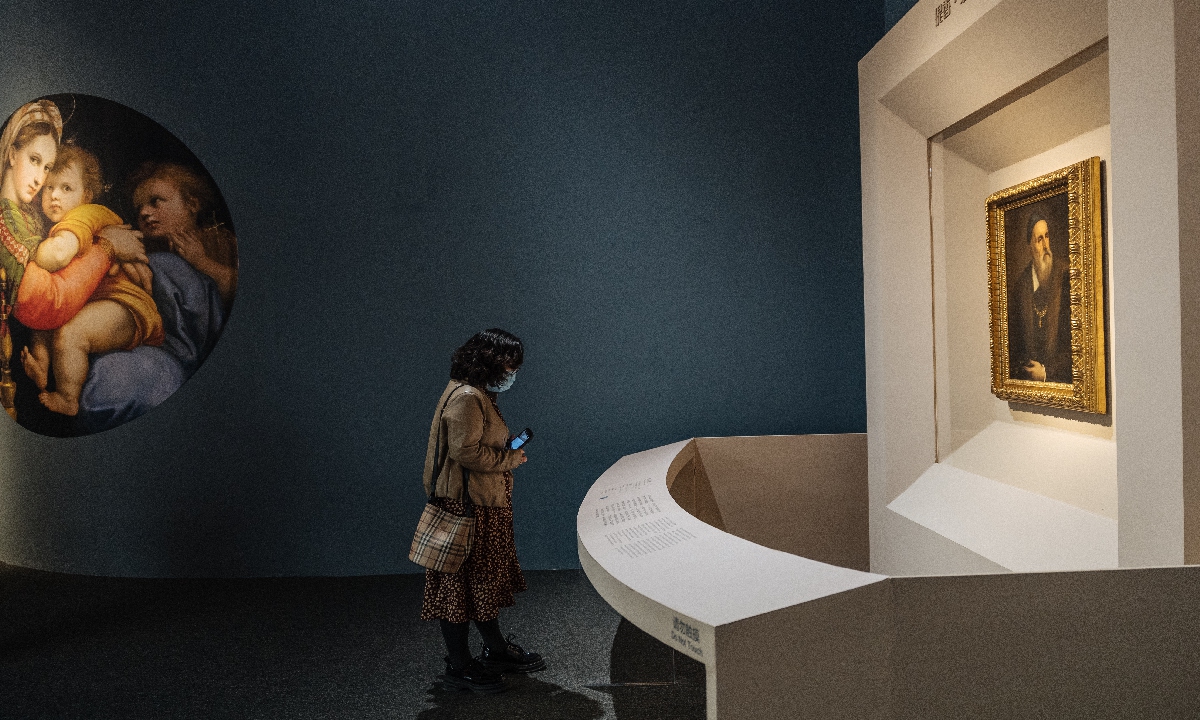
A visitor explores the exhibition at the National Museum of China in Beijing. Photo: Li Hao/Global Times
Historical connections
At the exhibition, a porcelain ware with Chinese aesthetics can be seen in the bottom-left corner of a self-portrait by Antonio Cioci.
The artwork was painted in Italy over 200 years ago, during the 18th century. The Chinese-looking porcelain piece was actually Italian porcelain, Griffo noted, saying that it epitomizes the West's desire to imitate Chinese ceramics.
"The Western world longed for fine Chinese ceramics for a long time, but it wasn't until the 18th century that they managed to recreate porcelain wares that looked Chinese," Griffo noted.
Porcelain was not the only cultural inspiration from the Far East that had a huge impact on Western art.
Fresco Flora, a fresco discovered in Italy's Pompeii, depicts the Goddess of Spring picking the flower. The fairy-like Goddess is wearing a sheer garment that many scholars believe was made of Chinese silk.
Li Jun, vice president of the School of Humanities at the Central Academy of Fine Arts, said that ancient China-Rome exchanges boomed during the 15th century and that fine silk from China was considered a treasure among Italian nobles.
Li said that in 2018 he curated an exhibition at the NMC that traced the exchanges between China and Italy made possible due to the Silk Road. The Embracing the Orient and the Occident: When the Silk Road Meets the Renaissance explored stories such as how Italian explorer Marco Polo came to China and witnessed Yuan Dynasty (1279-1368) culture and a comparison between the Western painting Madonna and Child and the Chinese scroll painting Child-giving Guanyin. It guided visitors to look into how the Silk Road prompted cultural exchanges between East and the West for more than 2,000 years.
"I see that Chinese visitors are truly curious about Italian art and culture," Griffo said.
The curator also told the Global Times that she is conceiving a new exhibition, which is scheduled to open in Shanghai by September, and will focus on 18th century art and classic Chinese fans and paper handicrafts.
